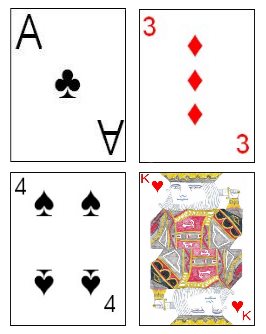
Your game can be made or broken by your putting green. Practice on a putting green before you try it on the real thing. Rain, improperly cut greens, and too much or too few water all have an impact on the greens' performance. There are many things you can do to prepare for the fairway and how to manage them. You need to play golf on several different courses so you can learn about the green conditions. You will need to try different courses before you can learn the best.
Putting green

A putting-green for golf is a great place to practice. Most are rectangular in form, but some have curves. Some people believe curved mats are easier to practice on than rectangular ones. The Stimp meter is a popular tool to measure the speed of a putting green. You won't need to spend too much time learning how to use your green once you are comfortable.
Types
There are many different types of golf putting green. Some are flat which are great for practicing low spin shots. Others can be more challenging. It doesn't matter which type of green you choose, the important thing is to have enough space for low swing shots. Greens can vary widely in shape, but most are oval or oblong in shape. They can also be flat or slightly sloped with contours all around the surface. It is up to you to choose the putting green design that best suits your needs.
Sizes
The sizes of golf putting greens vary widely, but there are some basic rules to follow. First, images must not exceed one inch per five feet. Moreover, books containing putting green images must be no larger than 4 1/4 inches by 7 inches. Although they can be larger, hole location sheets should not exceed 9x7 inches. Magnification of the putting-green information is also allowed for golfers who wear prescription glasses.
Cost

The cost of golf-putting greens will vary depending upon the type of material and the size of your installation. A synthetic putting green can run as high as $20 per square foot, and a real green can cost as little as $.70 per square foot. You should consider the size and complexity of your golf green. Larger greens may require more materials or take longer to install. An expert putting green installation will cost between $18,000 and $24,000.
Placement
Pin placement is an essential part of any golf putting green. This helps players choose how to approach the green. If the pin is placed on the back of the green, it may take a longer shot than on the front, so players need to decide where to position their ball. Pin placements on golf courses vary from day to day. This is due to the fact that superintendents rotate the pin placements at each green.
FAQ
What is the difference between a bogey and a bogey
A bogey, or bogey, is a number that golfers use as a target. It is not part of the game. Instead, it serves as a scoring system. The hole is won by the player who gets closest to the number.
Jock Hutchison (the first professional golfer from Scotland) invented the idea of a Bogey. The idea was conceived by Jock Hutchison, a professional golfer from Scotland.
He wanted to keep track how he was doing, so he wrote a number on paper and stuck it up to his bed. This became known as "Hutchy Bogey."
What is a PAR?
Par refers to how many strokes are required to complete a hole. By adding up each player’s individual scores, the total score can be calculated.
In a round, there are 18 holes. Each hole has its own rating. "Par 3'' is the highest rated hole. It is just three strokes from your hole. The "par 5" hole is the lowest rated. It is five strokes away.
What is the best way to score points as a golfer?
Points are awarded according to how well a competitor performs in a competition. You can score points in many different ways in golf. A player may win a tournament if they score more than others. In another scenario, a player might place second in a tournament. This would allow them to receive half the prize cash that was won by their winner. For placing in the third through 10th places, points are also given. These extra points are known by the "strokes."
There are many unofficial events that give points to the top performers, in addition to official competitions. If a player has previously performed well in an event, they may receive bonus points.
What happens at the conclusion of a round golf?
At the end of a round, the player with the lowest score wins. If two players are tied for first, they both win.
If more than three people are tied for first place after 18 golf holes, they each share the prize money.
The tournament committee will decide who receives the prize money if there are only two players left tied after 18 holes.
How can my game improve?
There are many ways you can improve your game of golf. One option is to join a golf club. You can meet other golfers and learn new techniques by joining a club.
You might also consider buying equipment, such as golf clubs or balls. These items will help you to improve your game.
You can also study books about golf. A deeper understanding of the game's rules and regulations can be gained by reading about it.
Can I learn how golf is played?
Yes. There are many schools that offer instruction in golf. You will need new equipment like a set for golf.
Statistics
- Professional golfers typically make between 60% and 70% of greens in regulation. (en.wikipedia.org)
- Buying a set of Titleist or Taylor-Made irons for nearly $1,000 is simply not necessary and likely a waste of money. (golficity.com)
- In the United States, women made up 25 percent of golfers in 2021, which was up from 19 percent in 2011, and junior female golfers account for 35 percent or 1.1 million golfers.[50] (en.wikipedia.org)
- They do this by means of assessing and rating courses according to the average good score of a "bogey golfer," a player with a handicap of around 20. (en.wikipedia.org)
External Links
How To
How To Make A Perfect Swing In Golf
A skilled golfer will have a solid understanding of the rules and how to improve his game. He should be able to recognize when to use different clubs, grips and stances.
These tips can help you to master golf.
-
Be familiar with the fundamentals of golf before you can begin to improve your game.
-
You can practice what you preach - It is important to practice. This will allow you to receive feedback on both your form as well as your technique, without having to hurt yourself. You can play a few golf rounds once you feel confident in your ability to control the mechanics of your swing.
-
Make sure you are prepared - Before you hit any ball, be sure to check your grip. Adjust if you don't feel the right way.
-
Keep it simple - Don't try to copy someone else's swing; take inspiration from great players like Tiger Woods, Phil Mickelson, Jack Nicklaus, Gary Player, Arnold Palmer, Ben Hogan, Ernie Els, Vijay Singh, Tom Watson, Sam Snead, Lee Trevino, etc. They are masters of their craft because they have practiced and perfected their own unique style.
-
Technology is a key component to improving your game of golf. You can find many apps that can analyze your swing, track it, measure distances, or even offer advice based on your statistics.
-
Be consistent - When you practice, always keep the following principles in mind:* Work on one aspect of your game at a time. You should focus on only the short game drills if you are working on your shorter game. Don't mix long and short drills.
-
You should only focus on one aspect of your body at time. For example, if your left arm is being worked on, don't forget your right arm. It won't improve your overall game.
-
Always be truthful - Do not lie to yourself. In other words, if you think you're doing better than you really are, you're cheating yourself.
-
Play with friends – Playing with other people will encourage you to improve your game. Not only will it help you stay motivated but you'll also find some friendly competition.
-
Know your strengths and weak points - Discover where you excel and where there is room for improvement.
-
Have fun. Enjoy learning golf. Remember that you are never "perfect" at golf. Even though perfection is not possible, it's still a great experience.